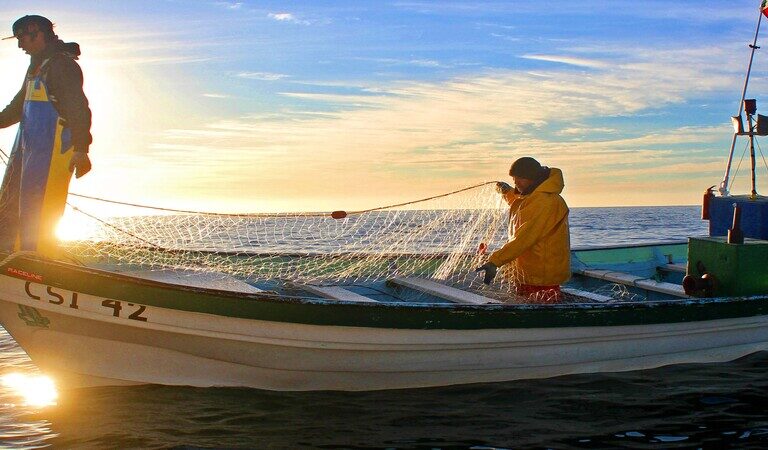
1. Mexico’s Organized Crime Responsible for Assasination of Goverment Official
MEXICO CITY — Mexico is one of the most dangerous countries in the world for people working on environmental issues, according to Global Witness, a human rights and environment NGO. There were at least 31 people killed in the country last year due to their connection to environmental causes. It’s even more dangerous for politicians working on the local and regional level. Minerva Pérez Castro was shot in the town of Ensenada on July 8 just hours after making public comments about the presence of illegal fishing in the state, as well as the extortion of local fishermen and buyers.
Drug trafficking groups like Los Chapitos — run by the offspring of Joaquín Guzmán Loera, better known as El Chapo — have settled into the region and expanded their interests to smuggling and fishing, among other illegal activities. Drug trafficking groups like Los Chapitos — run by the offspring of Joaquín Guzmán Loera, better known as El Chapo — have settled into the region and expanded their interests to smuggling and fishing, among other illegal activities.
Editorial Comment – Sea Save Foundation extends our condolences to the family of Ms Castro. We have been working with CITES for years to raise awareness and stop the looming extinction of vaquita and totoaba. She was a true ocean hero.
Thank you for your generous gift that will help us continue the production of this weekly, free publication
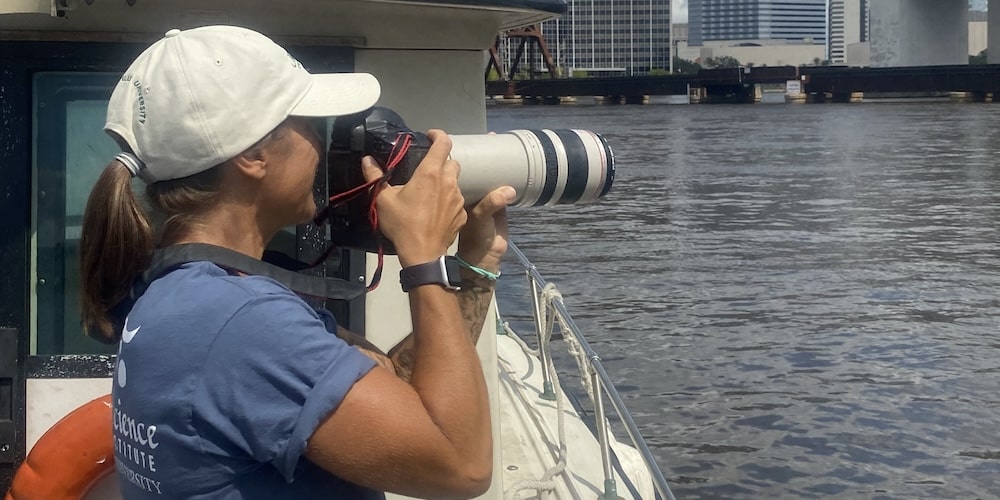
2. Grant Will Support Development of New RNA Dolphin Monitoring Technology
Dr. Annalaura Mancia, an associate professor of marine science at Jacksonville University’s Marine Science Research Institute, has received a $60,000 grant from the Marine Mammal Commission (MMC) for an innovative research project. Her goal is to explore a more efficient method for monitoring local dolphin populations and their distribution shifts associated with climate change. Instead of relying solely on visual and aerial surveys, Dr. Mancia’s proposal focuses on using RNA found in the water.
RNA, unlike DNA, is abundant and reflects explicitly the presence of living, physiologically active organisms. Researchers can more effectively identify their abundance and location by analyzing RNA shed by marine mammals. Established by the Marine Mammal Protection Act, it supports conservation efforts related to marine mammals and their habitats. Dr. Mancia’s project aligns with the MMC’s goals, and her funding is a testament to the potential impact of her innovative approach.
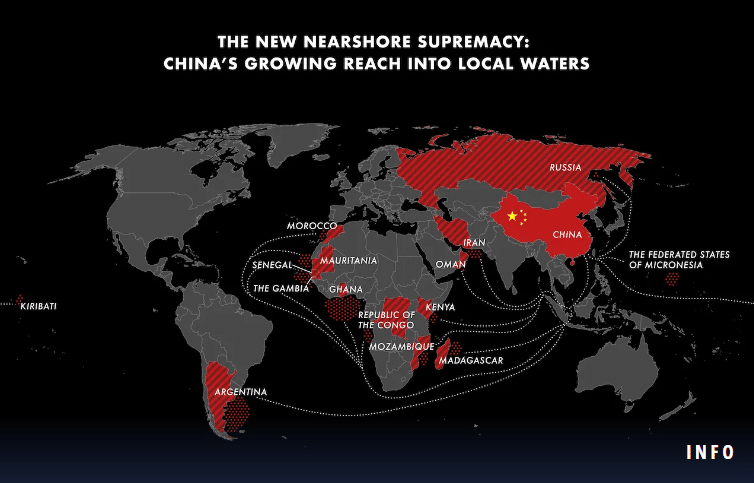
3. China Is Taking Over Local Waters Around the World
From South America to Africa to the far Pacific, China has been buying its way into restricted national fishing grounds, primarily by “flagging in.” This method typically involves using business partnerships to register foreign ships under the flag of another country, thereby allowing those vessels to fish in that country’s territorial waters. Chinese companies now control 62 industrial squid-fishing vessels that fly the Argentine flag, which constitutes most of the country’s entire squid fleet.
Many of these companies have been tied to various crimes, including dumping fish at sea, turning off their transponders, and engaging in tax evasion and fraud. China now operates almost 250 flagged-in vessels in the waters of countries including Micronesia, Kenya, Ghana, Senegal, Morocco, and Iran. In addition to the sovereignty and financial concerns, China’s flagging contributes to food insecurity in other countries and compromises ocean conservation.
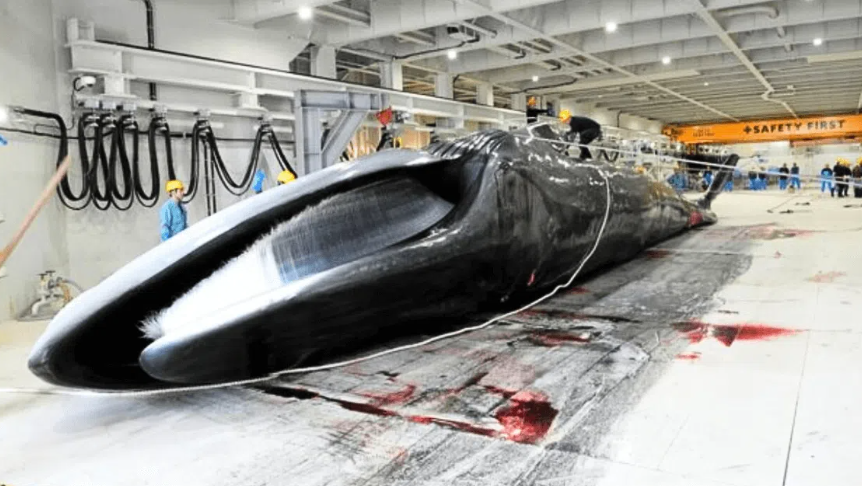
4. Japan Resumed Hunting of Fin Whales
Japan has resumed the hunting of the fin whales, killing the first in over 50 years: the whale, a 19.6-meter male weighing 55 tons. Japan has confirmed plans to kill up to 59 fin whales as part of its expanded commercial whaling target, which also includes minke, Bryde’s, and sei whales. The decision comes after Japan quit the International Whaling Commission (IWC), a global body responsible for managing whaling and conserving whales, in 2019.
The IWC previously operated under a scientific research loophole. Norway and Iceland have violated the IWC’s 1986 commercial whaling prohibition by taking advantage of regulatory loopholes. The International Union for Conservation of Nature lists fin whales, the world’s second-largest whales, as endangered. Despite global conservation efforts, these majestic creatures are threatened by historical whaling and ongoing environmental challenges.
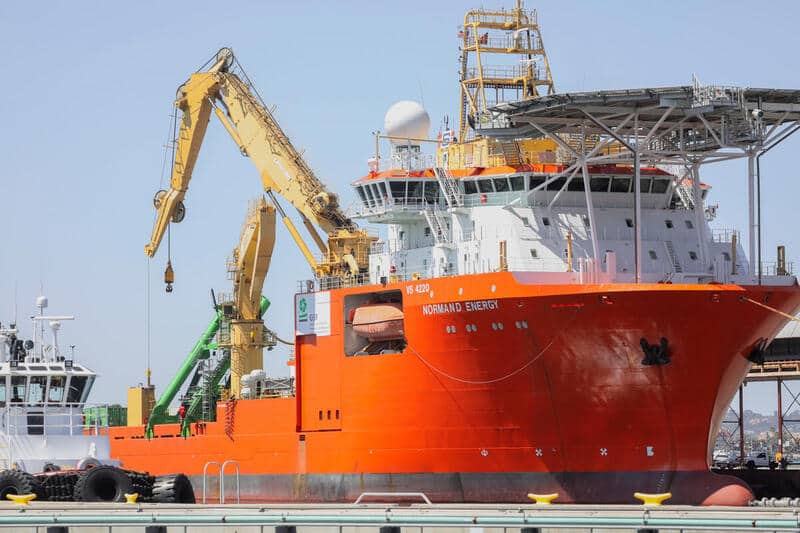
5. Secretary-General of the International Seabed Authority Vows to Prioritize Transparancy and Ocean Well Being
The International Seabed Authority (ISA) has elected Leticia Carvalho of Brazil as its next secretary general, as pressure mounts for a pause on efforts to mine the sea floor for minerals for use in the energy transition. The appointment of Carvalho, who formerly worked for Brazil’s oil regulator, could trigger a change in approach at the ISA. As many as 32 countries have called for a pause on deep-sea mining, said the Deep Sea Conservation Coalition, a group of non-governmental organizations that oppose deep-sea mining.
“In my view, rebuilding trust is the fundamental aspect,” Carvalho says. “Because the creation of the Law of the Sea envisaged the multisectoral use of the common space of the ocean…. I would say there are other elements that are equally important or fundamental (as rules, regulations and procedures for mining), such as how we go about benefit sharing and how we go about protecting or avoiding harm to the ocean.”
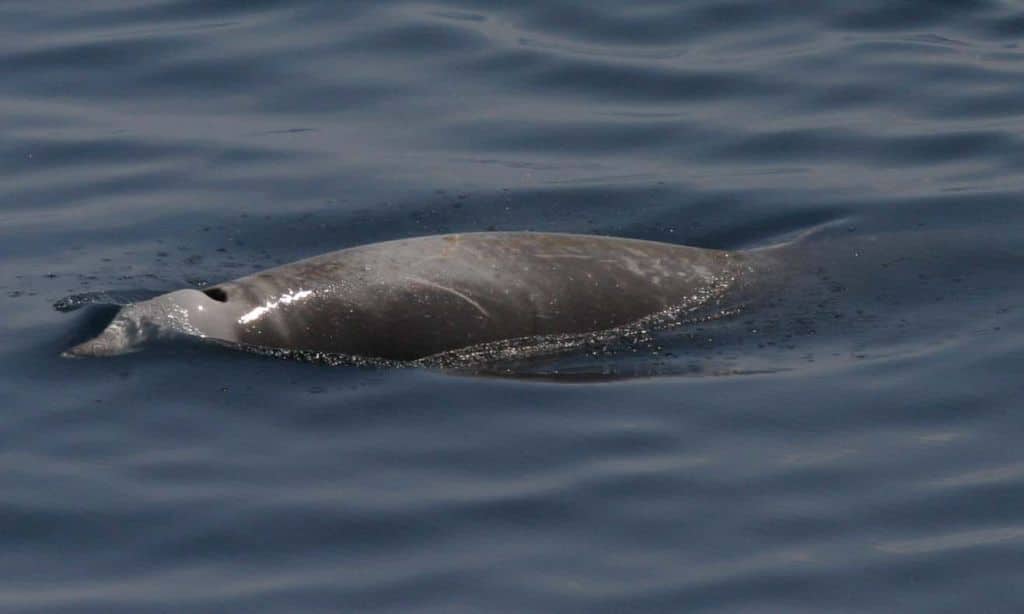
6. Insights Into Foraging Behavior From Multi-Day Sound Recording Tags on Goose-Beaked Whales in the Southern California Blight
During 2019 and 2020, 401 hours of acoustic and diving data were collected from six Sound and Motion Recording and Telemetry tags used on goose-beaked whales (Ziphius cavirostris) in Southern California. With this data, foraging dives were manually pinpointed by echolocation pulses and buzzes, and generalized additive models were utilized to examine factors impacting foraging behavior.
A realization resulting from this data analysis was that as dive depth increased, echolocation end depth, dive and echolocation durations, and bottom phase echolocation depth inter-quartile range also increased. Additionally, the median difference between dive depth and bottom phase median echolocation depth proposed that Z. cavirostris in this region usually forages in a narrow band near the seafloor. These new records of diving and foraging provide an understanding of how various factors influence the activity of Z. cavirostris in a region subject to high levels of anthropogenic disturbance.
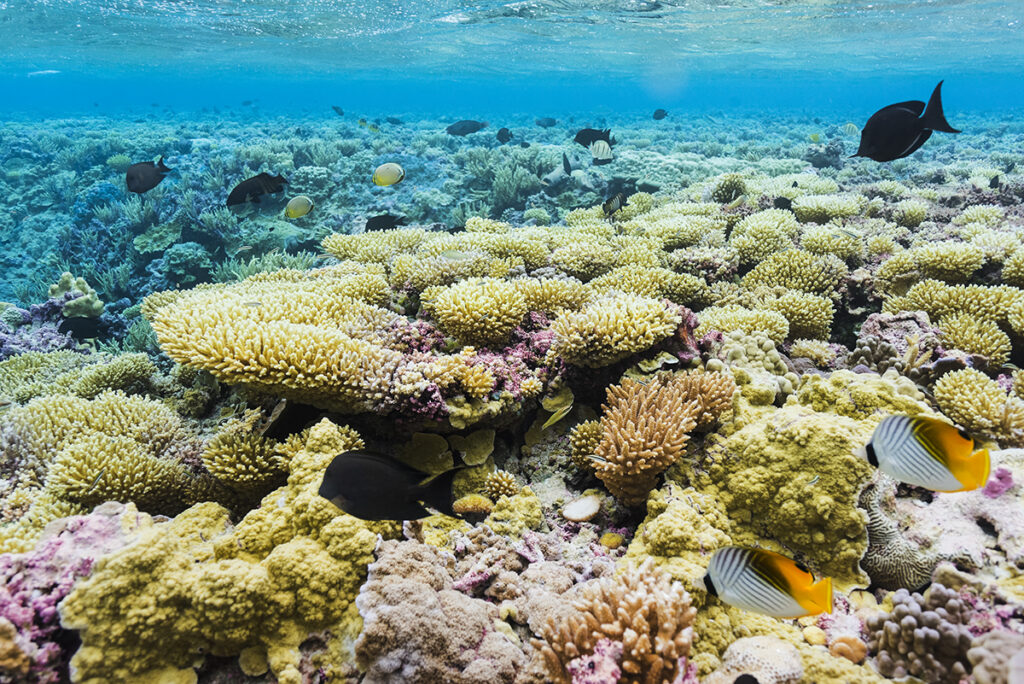
7. Island Restoration to Rebuild Seabird Populations and Thereby Augment Coral Reef Health
Mobile organisms like seabirds play a role in nutrient flows between ecosystems. This connectivity has been disrupted due to the degradation of island ecosystems. Island restoration, involving invasive species eradication and native vegetation restoration, can reestablish seabird populations and facilitate nutrient transfer between their foraging areas, breeding colonies, and nearby coastal habitats. The benefits of island restoration are diverse, making it increasingly common and scalable to larger islands and archipelagos.
In a study focused on the Chagos Archipelago in the Indian Ocean, researchers explored factors influencing breeding seabird abundances. Predictive modeling estimated that restoration efforts could increase seabird breeding pairs to over 280,000. Restored nutrient fluxes were predicted to enhance coral growth rates, reef fish biomasses, and parrotfish grazing and bioerosion rates. These cross-ecosystem benefits highlight island restoration as a conservation priority, enhancing resilience to climate change effects like sea-level rise and coral bleaching.
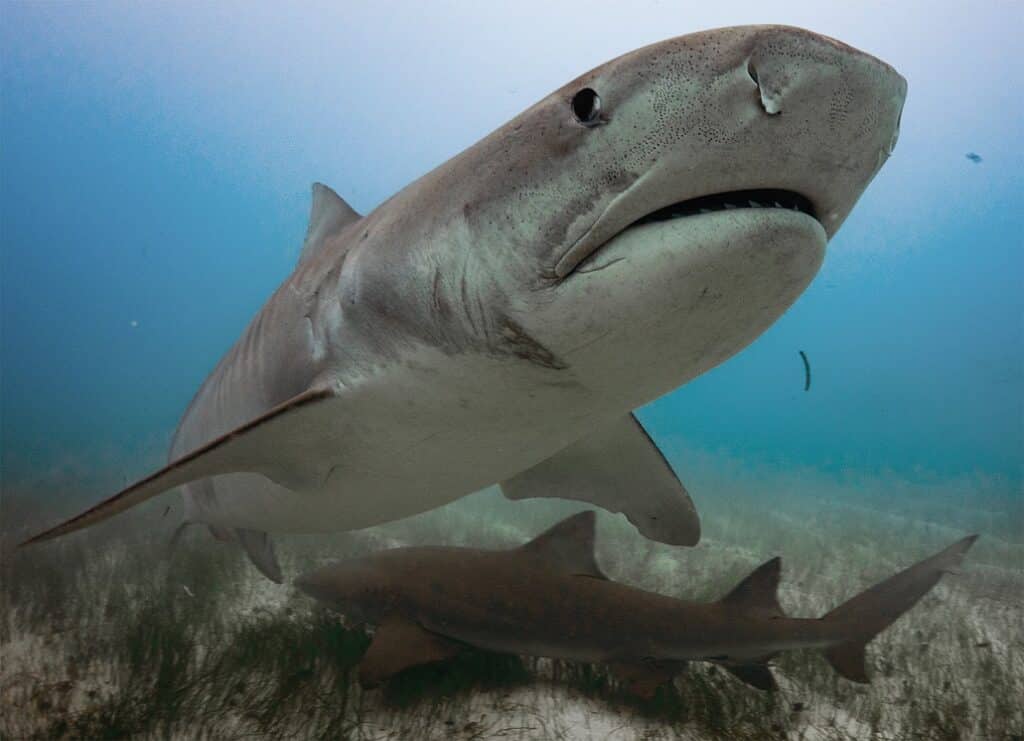
8. A Study – Ecological Role of Sharks Underscores their Importance to Oceans
Anthropocene Ocean is defined as “how human activity affects our planet’s climate and natural systems.” Sharks are essential to ecosystem functioning, and human impacts on shark populations have altered many of these effects. Here’s a concise synopsis: Regulating Prey Populations: As apex predators, sharks control the populations of other marine species. Feeding on animals lower in the food chain they help maintain ecosystem balance. Genetic Fitness: Sharks target weak individuals, removing sickness and diseases.
This promotes genetic health within populations. Behavioral Influence: Fear of sharks alters the behavior of other species, affecting their activity levels and habitat use. This variation impacts predation and overall organism abundance. Keystone Species: Sharks act as keystone species, influencing entire ecosystems. Their presence prevents overgrazing of resources like seagrass beds and coral reefs. Understanding and conserving these apex predators is crucial for preserving oceanic health and integrity.

9. New Marine Protections Could Help Wildlife Thrive—but Also Squeeze San Diego Fishermen
SAN DIEGO — A new proposal would expand the Cabrillo State Marine Reserve, making it the county’s largest protected area. The principle reason is that kelp, the foundation of the coastal ecosystem is dying. The expansion aims to support wildlife off Point Loma by preserving kelp forests. These underwater rainforests are crucial for a healthy ecosystem, providing oxygen and habitat for hundreds of species. However, local fishermen express concerns about losing fishing grounds.
Scientists believe climate change, predator loss, and pollution contribute to kelp decline. Marine protected areas were established to revive overfished waters, and expanding them aligns with California’s goal of conserving 30% of land and coastal waters by 2030 – a global initiative known as 30×30. What is next? The California Fish and Game Commission will ultimately decide on any Cabrillo expansion, along with 19 petitions for other changes to California marine protected areas, including several off San Diego County. It meets this month to begin considering them.
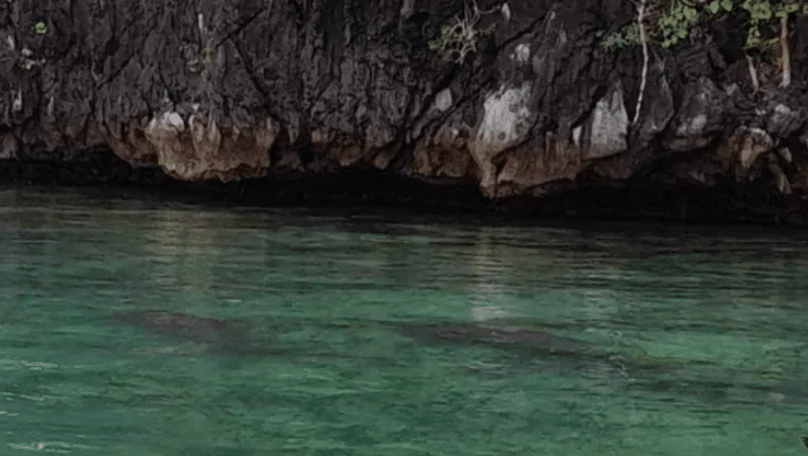
10. Pair of Dugongs Spotted in Coron Marine Sanctuary
BARANGAY TAGUMPAY, Philippines — On August 5, Siete Pecados Marine Park (SPMP) spotted rare seacows, locally known as dugongs, feeding on seagrass in the waters of Siete Pecados. The last documented appearance of dugongs in Siete Pecados was in 2017, so this recent sighting is particularly significant.
To expand upon this, the management of SPMP claims the recent dugong sightings within their marine sanctuary signal that their ongoing marine conservation efforts and Siete Pecados’s rich biodiversity have proven effective in successfully protecting these marine mammals. Dugongs are red-listed by the International Union for Conservation of Nature (IUCN) as vulnerable, so maintaining habitats that are beneficial to their survival is essential. SPMP has expressed that they remain fully dedicated to protecting these animals, as their appearances have proven the efficacy of marine conservation efforts.
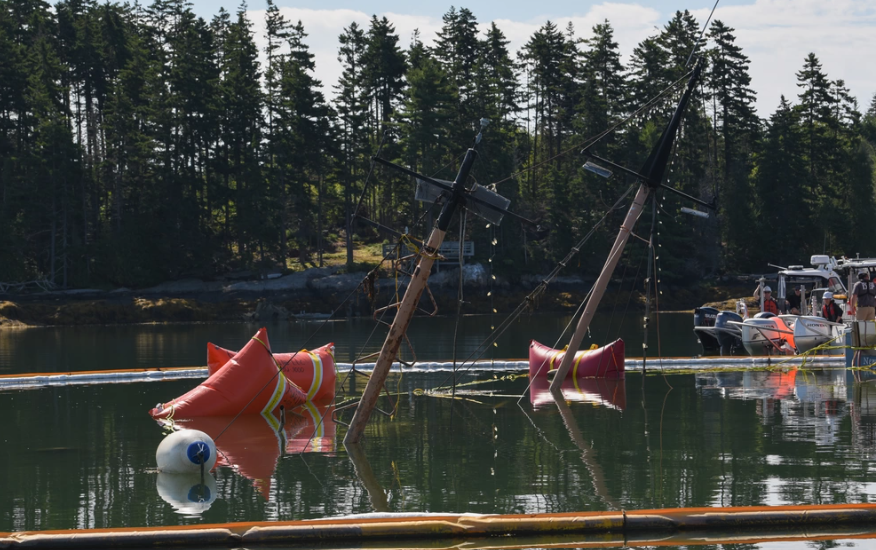
11. Recovery of Jacob Pike Wreck From New Meadows River
PORTLAND, Maine — The Coast Guard is slated to remove the 83-foot motor vessel Jacob Pike, which sank during a winter storm in Harpswell, Maine, on January 10, 2024. The Jacob Pike has been a pollution threat in the New Meadows River since its sinking. When the owner and responsible party failed to address the pollution risk, the Coast Guard collaborated with various agencies to develop a comprehensive plan for safe and permanent removal.
Although the total amount of oil on board is unknown, the fuel tanks are estimated to hold 1,000 gallons. The Coast Guard has taken measures to contain the spread of pollution, including placing floating oil booms around the vessel and removing 400 gallons of oily water mixture. However, diver entanglement risks have prevented further recovery efforts.
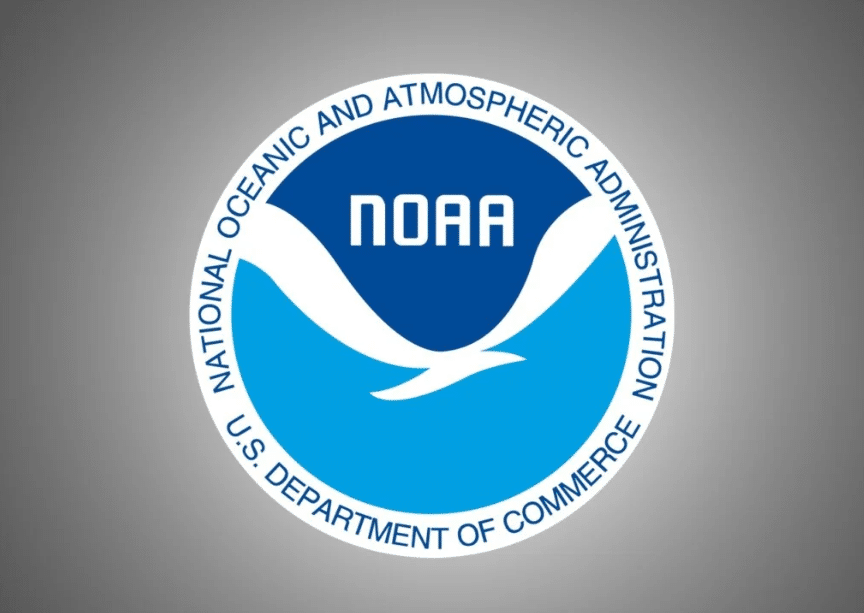
12. NOAA Predicted a Dead Zone the Size of Connecticut in the Gulf of Mexico
This year’s dead zone is even larger than anticipated, covering an area roughly equivalent to New Jersey. NOAA initially predicted a zone of 5,827 square miles, but it has now expanded to approximately 6,705 square miles, exceeding expectations by over 1,000 square miles. More than 4 million acres of marine life habitat in the Gulf of Mexico have become a “dead zone.” This area lacks sufficient oxygen, a condition known as hypoxia, which poses a threat to fish and other marine animals.
This marks the 12th-largest dead zone recorded by NOAA in 38 years. The dead zone originates from excessive nutrients discharged from the Mississippi River into the Gulf. These nutrients lead to algae overgrowth, which subsequently dies and decomposes, depleting oxygen levels. Monitoring hypoxia is crucial for understanding ocean health, especially given climate change and potential storm intensification.
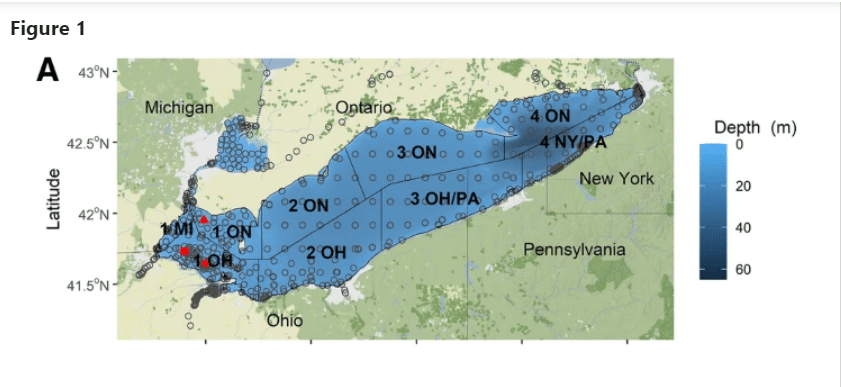
13. Analysis of Interjurisdictional Migration of Lake Whitefish in Lake Erie May Improve Fisheries Management
Migratory fishes that cross political boundaries can encounter abrupt changes in methods and intensity of fishing. Interjurisdictional migrations lead to seasonally changing patterns of exploitation risk, emphasizing the importance of spatially explicit approaches to fishery management. Understanding how risk changes along a migration route is important, but quantifying risk can be complicated when multiple fishing methods are geographically segregated and when bycatch species are considered.
Further, habitat selection can influence migration behavior, interacting with other management objectives such as water quality and habitat restoration. This case study examined a data set for Lake Whitefish in Lake Erie, where they migrate through multiple spatial management units that are variably affected by seasonal hypoxia and host a variety of fisheries.
Editorial note: Oceans do not recognize political boundaries, so we at Sea Save Foundation work internationally to bring real change.
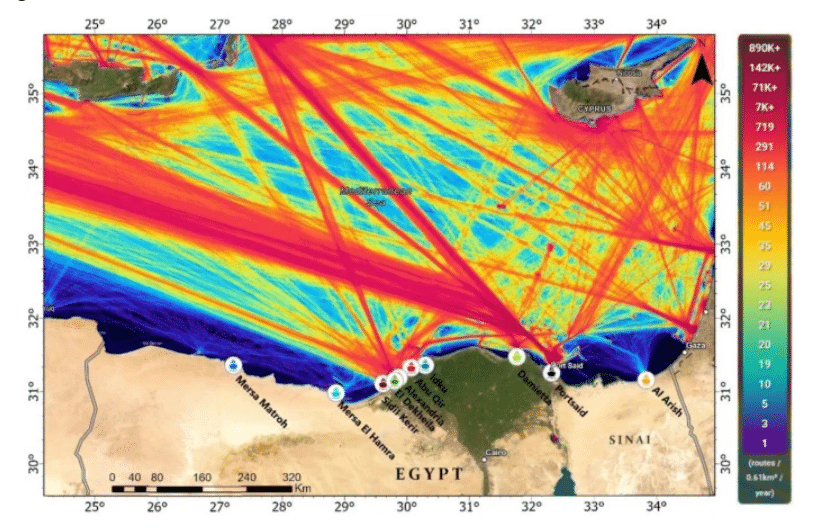
14. Ten Years of Oil Pollution Detection in the Eastern Mediterranean Shipping Lanes Opposite the Egyptian Coast Using Remote Sensing Techniques
The Eastern Mediterranean possesses immense strategic importance due to its crucial role in facilitating global trade. The heavily trafficked Suez Canal accounts for approximately 12% of global trade and 30% of worldwide container traffic. This maritime activity poses significant challenges, including the risk of marine pollution, especially from oil spills, which adversely affect fragile marine ecosystems.
Consequently, the region’s marine traffic represents global connectivity and environmental vulnerability, necessitating prudent management to protect the marine ecosystem. In a comprehensive study spanning a decade (2014–2023), researchers used Sentinel-1 Synthetic Aperture Radar (SAR) data to monitor oil pollution in the Eastern Mediterranean. Key findings included 355 oil spill events affecting over 6000 km². The largest spill in 2020 covered 198.73 km². The Exclusive Economic Zone (EEZ) experienced increased incidents near coastlines and major ports.
The study emphasizes the role of remote sensing in addressing maritime environmental challenges.
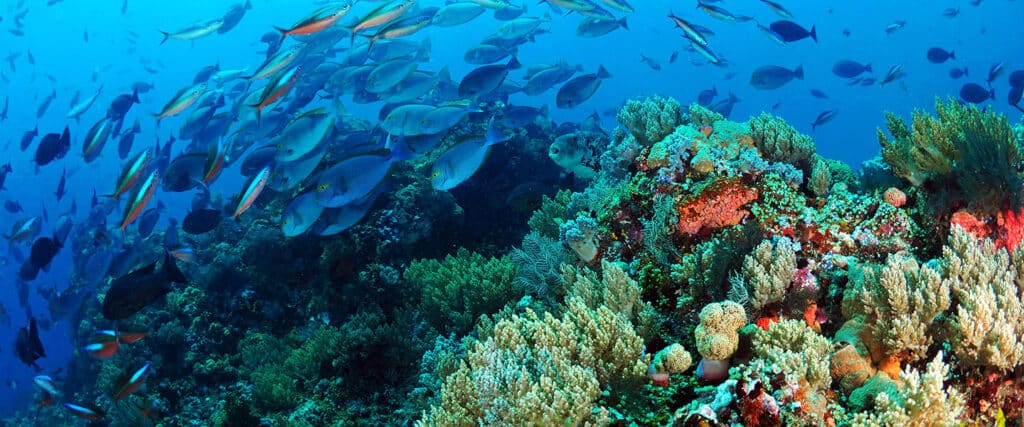
15. Sustainable Ocean Development Policies in Indonesia: Paving the Pathways Towards a Maritime Destiny
As a maritime nation, Indonesia recognizes the importance of sustainable ocean development. It introduced the Indonesian Ocean Policy (IOP), a groundbreaking initiative to promote a blue economy—using ocean resources for economic growth while maintaining marine ecosystems. However, several challenges hinder successful outcomes. One is the declining ocean health caused by threats like overfishing and pollution that affect Indonesia’s marine ecosystems. Climate crises: Rising sea levels and extreme weather events impact coastal areas.
Business disintegration: Fragmented ocean management complicates effective policies. Inadequate infrastructure and technology: Investments are needed for sustainable practices. Low sustainable investment: More funding is required for ocean conservation. Despite these obstacles, Indonesia prioritizes ocean health and sustainable resource use. The national ocean policy and blue economy initiatives aim to address these challenges. Policymakers must adopt a cautious approach to ensure successful and impactful ocean governance.

16. Hong Kong Scientists Warn of More Severe Bleaching of Local Coral Reefs
HONG KONG — Scientists have cautioned that local coral reefs will face more severe and frequent bleaching, with sea temperatures rising to as high as 30.7 degrees Celsius (87.3 Fahrenheit). This will likely result in the situation becoming widespread across key marine reserves.
The city is near the northern limit of where corals can survive, as anywhere in a latitude higher than Hong Kong is generally considered inhospitable for the animals. Frequent coral bleaching can threaten their survival. The disappearance of reefs, which occupy just 1 percent of the ocean floor, is considered a global concern and a threat to the survival of the world’s most biodiverse habitats.
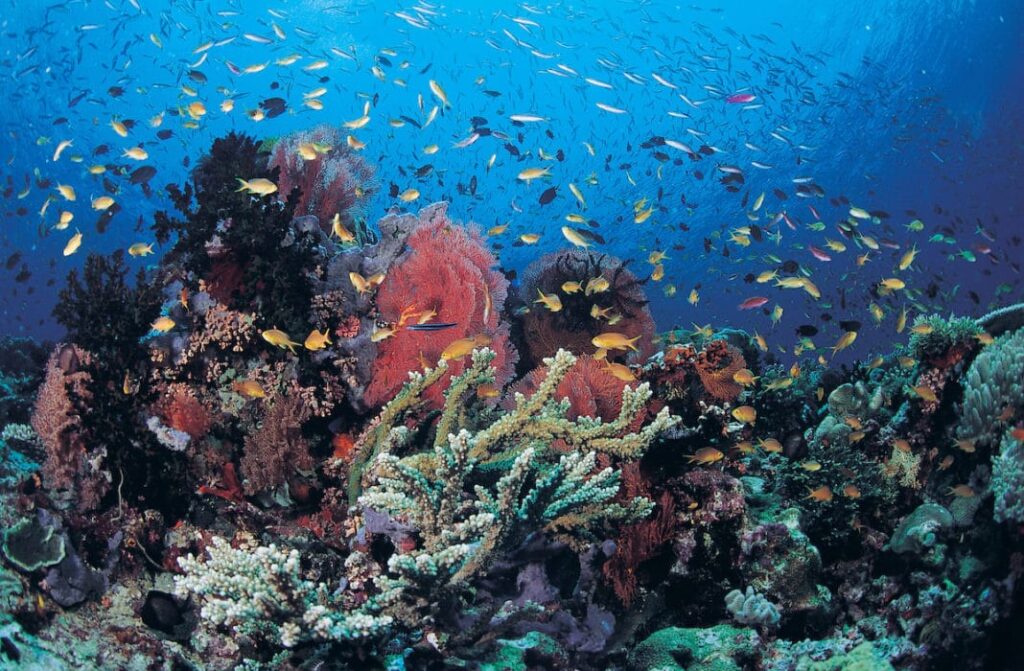
17. Upcoming Papua New Guinea Study Will Assess Health of Reefs
In Papua New Guinea, a new study will examine the health of reef systems in marine protected areas. This expedition study is a collaboration between Papua New Guinea’s Conservation and Environment Protection Authority (CEPA), National Geographic Pristine Seas, and the Wildlife Conservation Society (WCS). The lead scientist for National Geographic Pristine Seas, Dr. Alan Friedlander, claims that this study in the biologically diverse Coral Triangle “…will provide a thorough understanding of the places [they] explore, helping to inform management and protection of the country’s unique marine environment.”
Particularly, researchers eagerly await studying Papua New Guinea’s remote New Ireland Province, which has an aggregation of species.
At Sea Save Foundation, we are proud that our sponsor and strategic partner, The Undersea Hunter, is hosting National Geographic Pristine Seas aboard their Argo vessel. Bravo for your part in this critical work!
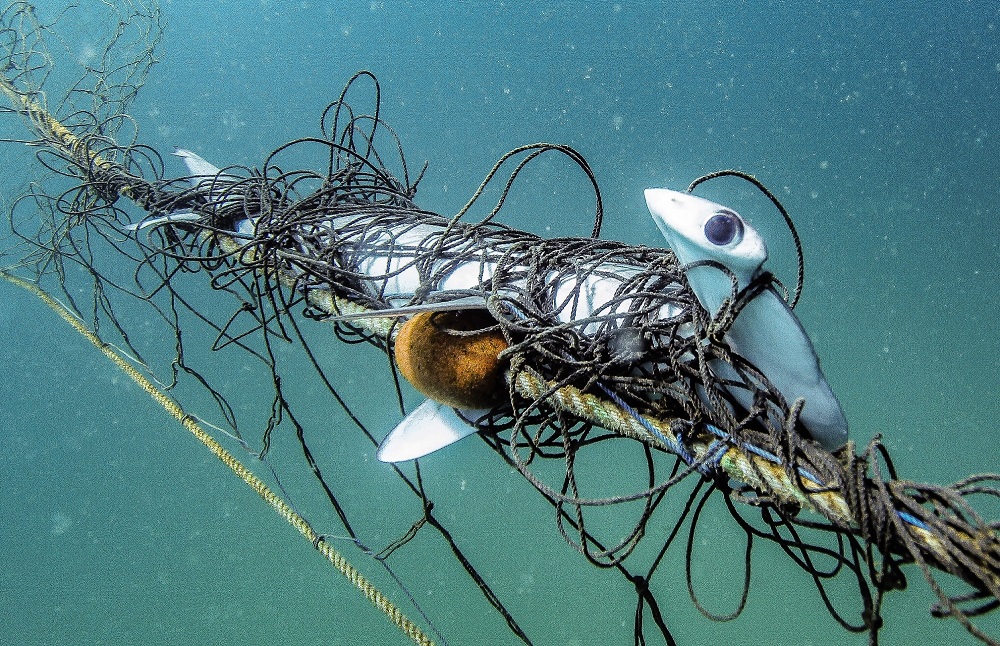
18. New Data: Shortened Shark Net Season Threatens NSW Sharks
The Department of Primary Industries (DPI) recently released the annual shark net catch statistics, showing that the New South Wales (NSW) Shark Meshing Program is driving NSW’s grey nurse sharks closer to extinction. Last week, NSW Fisheries Minister Tara Moriarty called to shorten the shark meshing program period by one month. Still, this action won’t save the critically endangered grey nurse shark from extinction on the east coast of Australia.
Lawrence Chlebeck, a marine biologist with HSI Australia, explained that in this program, “…84% of the grey nurse sharks caught in the nets since 2012 were breeding-age female sharks,” Thus, advocates are calling for an end to this government-funded program that is capturing large numbers of the breeding female population. Marine biologists are instead advising government officials to move into other evidence-based solutions, such as tagging sharks.
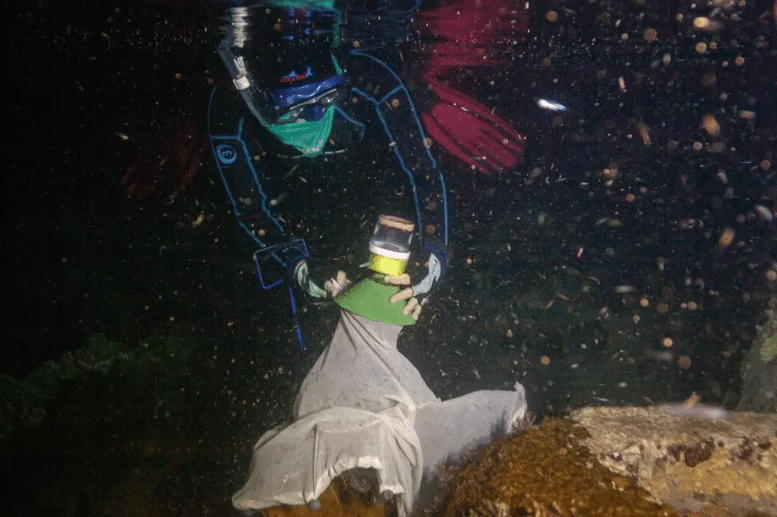
19. How Scientists in the Dominican Republic Help the Sex Lives of Coral
Researchers in the Dominican Republic are helping along the sex lives of stony corals to give them a better chance against disease and bleaching events. A 2019 study showed that coral reefs have a value of $1.14 billion per year from fishing and tourism. But in 2023, over 90% of the corals in reefs surrounding the Caribbean nation were bleached. Rita Ines Sellares Blasco, CEO of the Dominican Foundation of Marine Studies, says corals cannot reproduce sexually due to the loss of coral cover.
When they release their gametes (sperm and eggs) into the water, colonies are too far apart. “Gametes will not encounter each other despite the synchronized spawning,” she says, “So with the effort of collecting and fertilizing the gametes, we are ensuring their successful reproduction and the production of recruits that will be planted out into the reefs.”
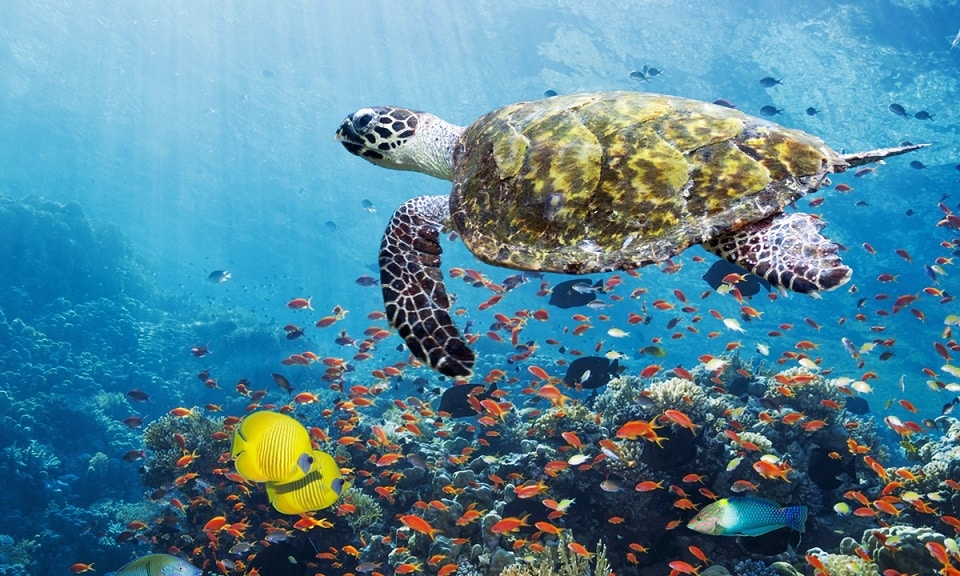
20. Shining a Light on China’s Sea Turtle Conservation Efforts in South China Sea
China has been increasing its efforts to protect sea turtles, with all species now protected. Any capture, purchase, sale, transportation, possession, and use of sea turtles is illegal. In addition to cracking down on the illegal trade in turtles, it has also established sea turtle habitat reserves to safeguard nesting sites. China announced the Sea Turtle Conservation Action Plan (2019-2033) at the end of 2018.
One of the critical purposes of the plan is to explore establishing a cooperation mechanism for sea turtle conservation with neighboring countries, working together to protect sea turtle populations and habitats. After years of protection and ecological restoration, 1,734 nests with green sea turtle eggs were found in the Xisha Islands between 2017 and 2023. The sea turtle paradise is expected to provide more baby sea turtles with a safe home.
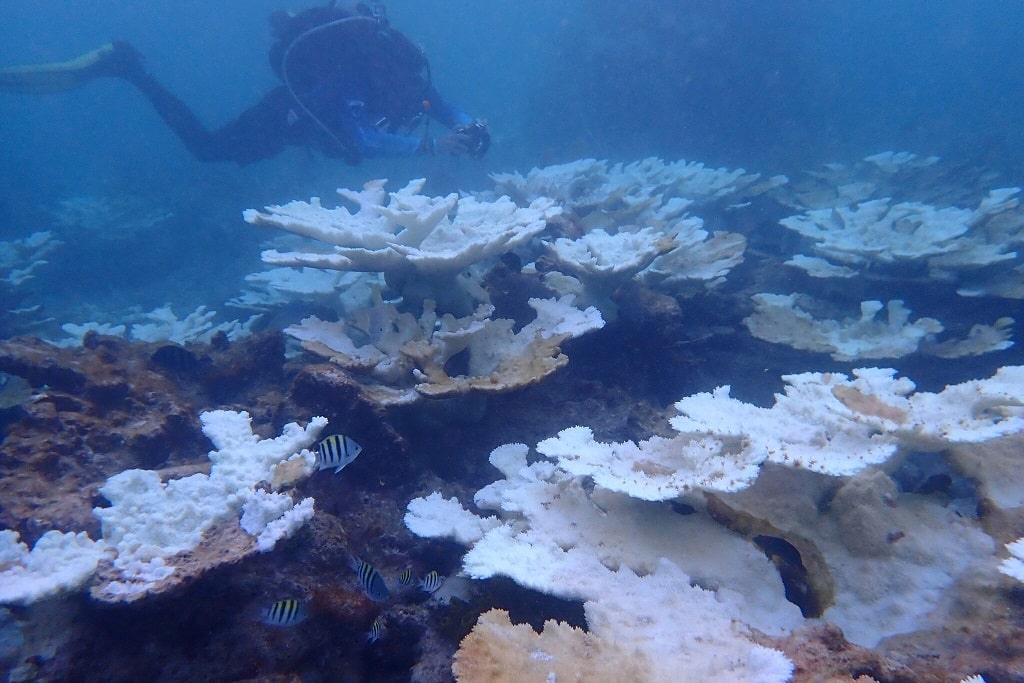
21. For Florida Corals, Unprecedented Marine Heat Prompts New Restoration Strategy
ORLANDO, Fla.—An unprecedented marine heat wave last summer that ravaged Florida’s fragile reefs upended restoration efforts, prompting conservationists to preserve and propagate more of the sensitive corals on land. This work is being done at the Florida Coral Rescue Center, tucked away in an office park hundreds of miles from the southeast Florida coast where North America’s only barrier reef is at dire risk.
Here, a collection of brain corals recently performed a once-a-year feat—producing a constellation of egg sacks. After recreating conditions that would signal to the corals it was time to spawn, the conservationists succeeded. Slowly, the egg bundles, each no larger than a pea and filled with 10 to 15 eggs, rose to the surface, where they were collected with nets. In time, the eggs would be fertilized, and baby corals would be raised in hopes of eventually being applied to the reefs.
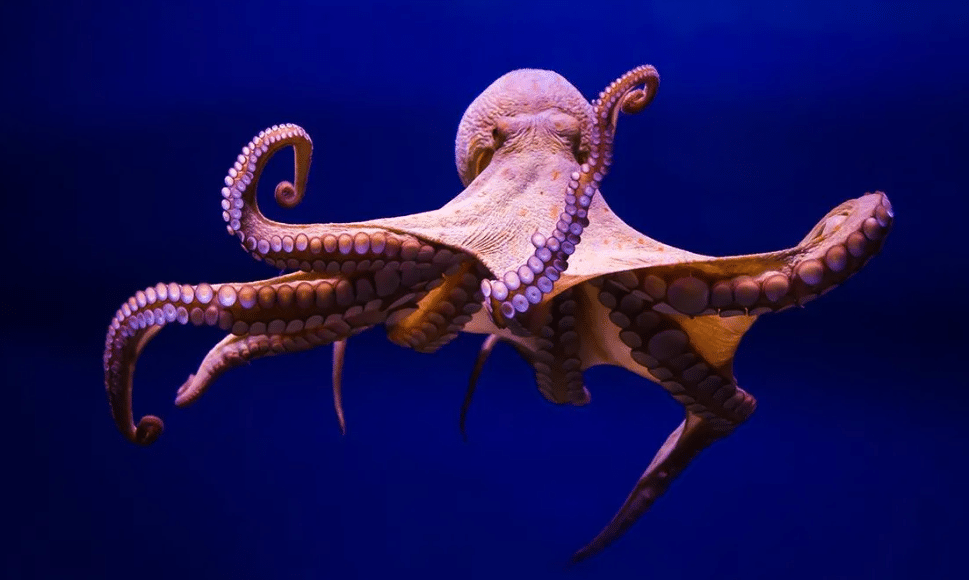
22. New Legislation Seeks to Ban Octopus Farming in the U.S.
In a significant move regarding animal rights and environmental protection, U.S. lawmakers have introduced bipartisan legislation to ban octopus farming within the country. This initiative, known as the Opposing the Cultivation and Trade of Octopus Produced through Unethical Strategies (OCTOPUS) Act, was prompted by growing awareness of the unethical treatment of these highly intelligent sea creatures in farming practices, particularly after a plan by a Spanish seafood company to create an octopus farm gained public attention.
Senators Sheldon Whitehouse (D-RI) and Lisa Murkowski (R-AK) introduced the bill, emphasizing the ethical implications of confining octopuses in artificial environments. This move could prevent U.S. companies from engaging in these practices before they become established. The senators argue that “octopuses are among the most intelligent creatures in the oceans,” thus, they should not be subjected to factory farming conditions.
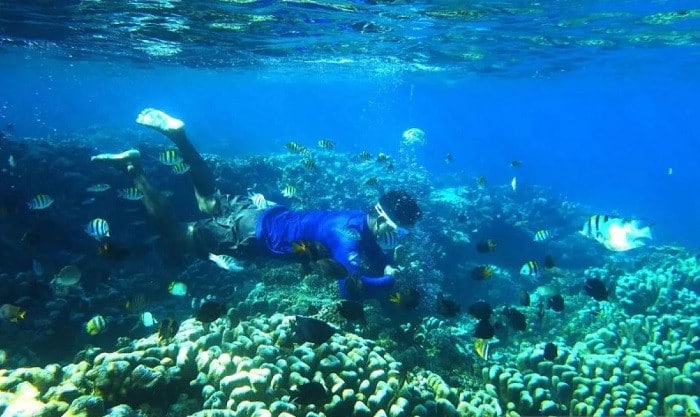
23. Deep Sea Mining Opponents Suffer Major Setback
Deep sea mining opponents recently experienced a setback when they failed to achieve an international moratorium on the controversial practice. In the past, those favoring mining prevented the International Seabed Authority (ISA) from debating the subject, but this time, a debate was to be held. However, a draft calling for “the development of a general policy […] for protecting and preserving the marine environment” didn’t advance.
Several delegations argued the draft required clarity and that the ISA’s full assembly should not make decisions regarding the protection of marine habitats. Instead, the countries felt the ISA’s Council should decide. Considering this, Chile withdrew the draft measure as the assembly’s annual session ended due to constant opposition and a lack of consensus. Despite these setbacks, deep sea mining opponents remain hopeful that ISA’s Council expedites the drafting of commercial exploitation rules.
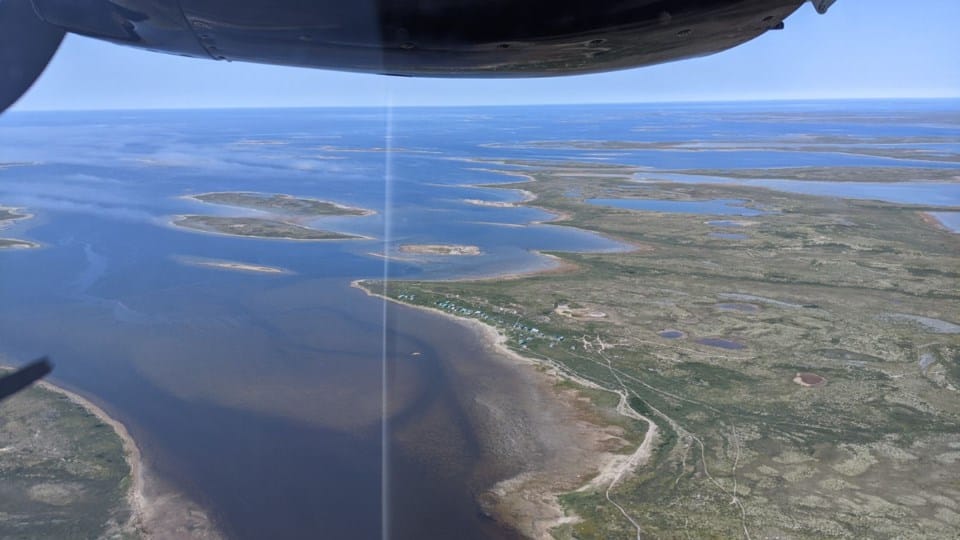
24. Aerial Survey Tracking Beluga Whale Population in James Bay and Eastern Hudson Bay
JAMES BAY, Canada — Fisheries and Oceans Canada (DFO) conducted aerial surveys to estimate the beluga whale population in James Bay and eastern Hudson Bay from July 18 to 26. Eastern Hudson Bay is now being surveyed until Sept. 15. The Mushkegowuk Council plans to use the survey results to create a marine conservation area in western James Bay.
Surveying from July to September is crucial since belugas are migratory species. In the wintertime, they migrate but usually return to the same summering grounds each year. When fully grown belugas, males are about 3.5 metres long while females are about 3.3 metres long. The last survey completed in 2021 shows that there were just over 16,000 belugas in James Bay at the time.

25. COP29 Summit to Focus on Climate Financing, Says Chief Executive
Key points from an interview with Elnur Soltanov regarding climate financing at COP29: Focus: The United Nations Climate Change Conference (COP29) will prioritize climate financing. Goal: COP29 aims to establish a clear and ambitious “New Collective Quantified Goal” (NCQG) for climate financing, addressing the needs of all parties. Importance: Advancing collectively on all pillars of the Paris Agreement, with climate financing central, is crucial.
Timeline: The NCQG, agreed upon in 2015, must be defined by 2025 to support the poorest countries in their climate change efforts. Strategy: High-level discussions and political engagement are essential. Documents: Azerbaijan will present a Transparency Report and its “Nationally Determined Contribution” (NDC) at COP29. Urgency: The margin for action is shrinking; commitment from all parties is vital to address the climate crisis effectively. COP29 runs from November 11 to 22, serving as a litmus test for global cooperation and climate action.
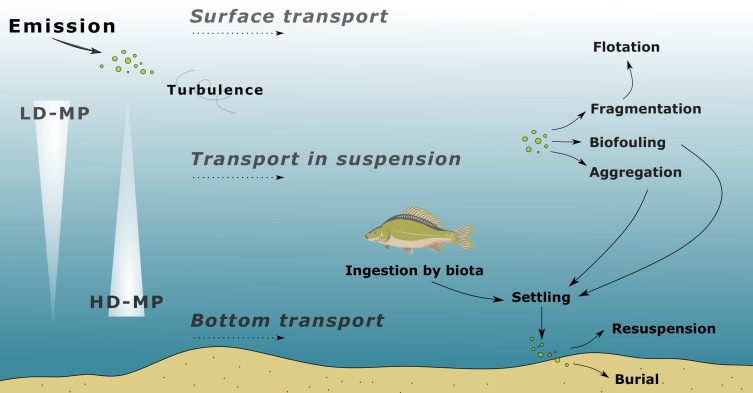
26. Understanding the Spatio-Temporal Behaviour of Riverine Plastic Transport and Its Significance for Flux Determination: Insights From Direct Measurements in the Austrian Danube River
Want to know more? Certainly! Here’s a concise synopsis of the study on riverine plastic transport dynamics in the Danube River: Plastic pollution in rivers is a growing concern. While rivers serve as major pathways for plastic, they are also subject to pollution. This study focuses on understanding plastic transport dynamics by adopting sediment research methods. Using cross-sectional data, it analyzes spatio-temporal variations in plastic occurrence.
The Danube River, specifically comparing impounded and free-flowing sections, is studied. Applying these methodologies is crucial for accurate flux determination. Microplastic loads were calculated, revealing doubled to tripled plastic loads within the Austrian section of the Danube. The study highlights rivers as sources, pathways, and sinks of plastic pollution influenced by hydro-morphological conditions.
Do you have a scientific mind and enjoy technical language? Click the Link!
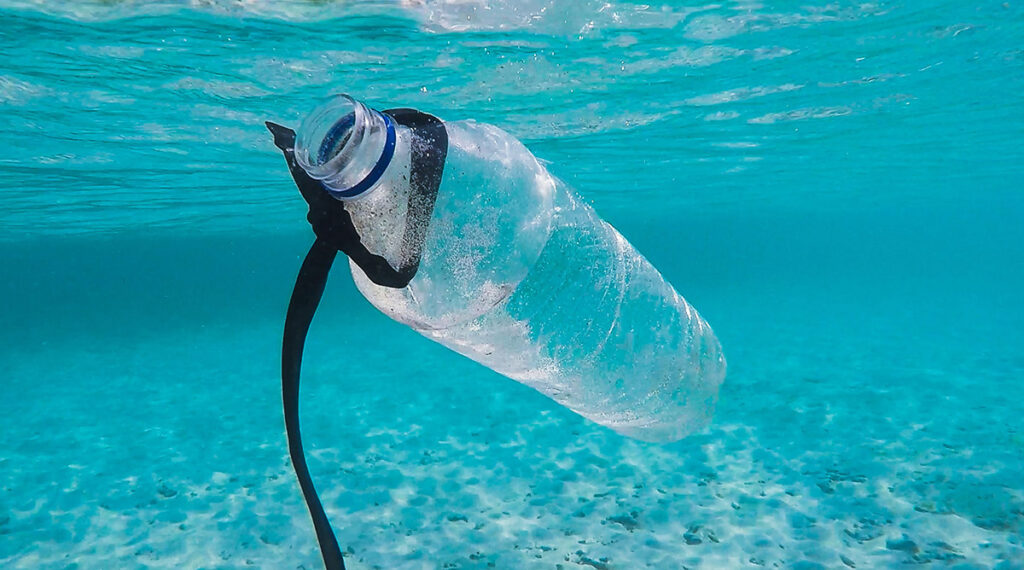
27. Joe Biden Has a Plan to Phase out Single-Use Plastics
President Biden announced a commitment to phasing out single-use plastic products in the federal government to move away from single-use plastic products across all U.S. federal agencies/operations by 2035 while working to end single-use plastics in government-related food service events and operations by 2027. “President Biden is committed to taking ambitious actions throughout the lifecycle of plastic to end plastic pollution and is working with the global community to do the same,” the White House wrote.
The administration explained that it will attempt to meet these goals by “selecting reusable, compostable, and highly recyclable products” instead of single-use plastics. It also said that it would try to decrease the amount of “pollution pathways” — preventing the use of materials that may end up as waste or pollution — by adding water refill stations, for example, to cut down on the use of plastic bottles.
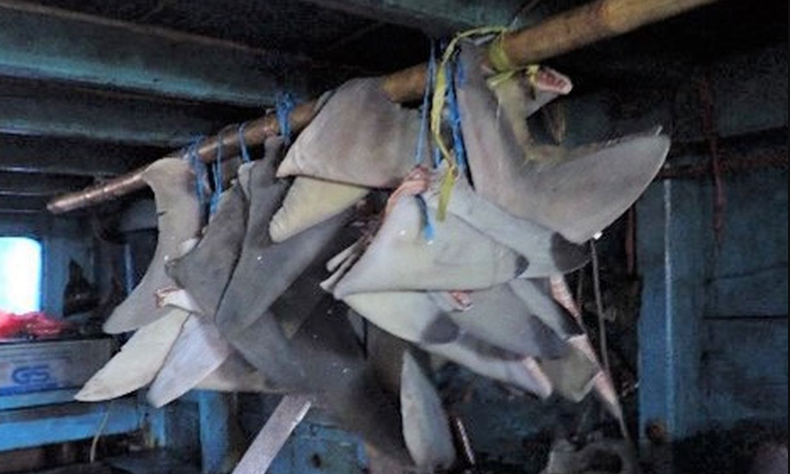
28. Five Indonesian Men Guilty of Illegal Shark Fin Fishing Near Darwin
Five Indonesian nationals caught with 50kg of shark fin aboard their boat have pleaded guilty to illegal fishing offences in an Australian court. In a joint statement, the Australian Border Force and Australian Fisheries Management Authority said five Indonesian nationals were caught fishing illegally inside the Australian Territorial Sea approximately 294km northeast of Darwin on July 7.
The vessel was seized, along with 50kg of shark fin, 80kg of bait fish, and a substantial quantity of fishing equipment that was on board. Australian Fisheries Management Authority general manager Justin Bathurst said Australia’s waters were an attractive target for illegal fishing operators.”Sharks are an essential part of a healthy ecosystem, helping to control the balance of marine species and ensuring ecological stability. Removing sharks from the marine ecosystem threatens the health of our well-managed fisheries.”

29. One Way a Plastics Treaty Could Help the Global South: Fund Waste Management
Tackling plastic’s entire lifespan, from production to disposal, could eliminate most of the pollution it generates. However, a vast expansion of waste management is a “crucial prerequisite.” By the end of the year, some 170 countries will finalize the world’s first legally binding treaty to curtail plastic pollution.
Its success will depend in no small part on money: creating a funding pipeline so signatories, especially in the Global South, can execute the promises they agree to. For the moment, the specifics of this financing remain bound up in diplomatic haggling. Still, countries broadly agree that billions of dollars are a necessary, if modest, starting point; modeling studies have pegged the need between $3 trillion and $17 trillion. Disagreements center on how to raise it, who should administer it, and what to spend it on. Click the Link to get the Rest of the Story!
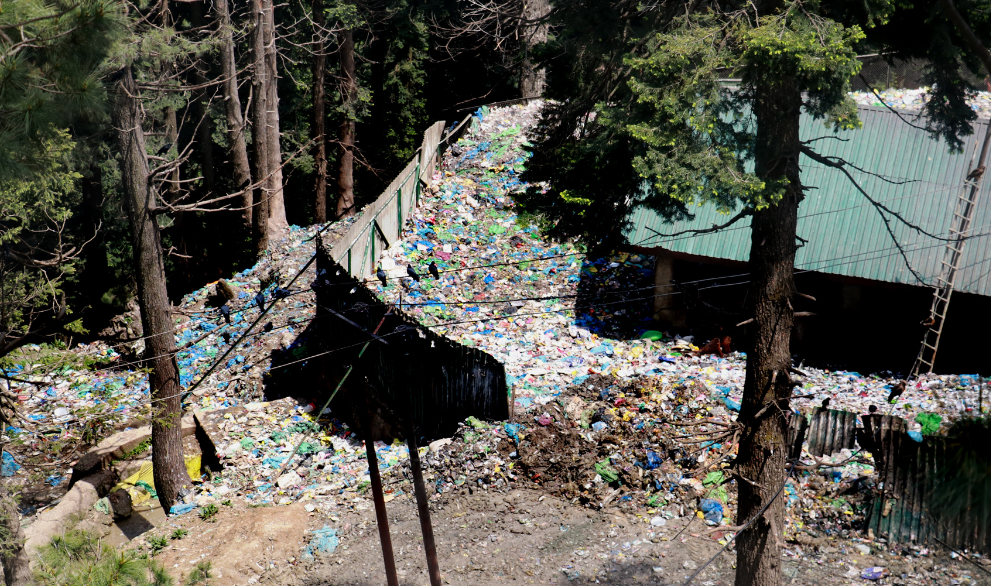
30. GDA Enforces Complete Ban on Polythene, Plastic in Gulmarg
GULMARG, India —To conserve the environment, the Gulmarg Development Authority (GDA) has announced a ban on using polythene and plastic within the eco-fragile zone of Gulmarg. According to the circular issued by the Office of the Chief Executive Officer, GDA, this ban aligns with the collective responsibility of stakeholders, including the local municipality and hoteliers, to keep Gulmarg clean.
The circular stresses the need for hoteliers to refrain from using plastic water bottles within their establishments and replace them with glass bottles within a month to ensure a complete switchover. The Chief Executive Officer of the GDA highlighted that this initiative has been well-received by the hoteliers of Gulmarg, who have actively participated in various green initiatives and eco-tourism conclaves organized by the authority. The circular further instructs that the necessary measures to transition to glass bottles be implemented within a month.
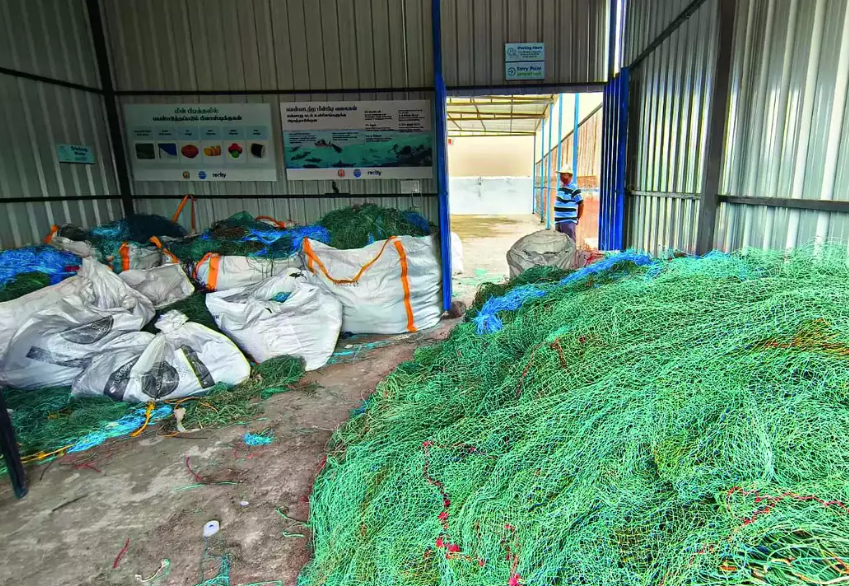
31. Pollution Control Board Reels in Ghost Nets
CHENNAI, India — The Tamil Nadu Pollution Control Board has since May been collecting and recycling discarded fishnets that would otherwise become “ghost nets” – torm and discarded in the oceans – that drift underwater and strangle and kill fish, coral reefs, turtles, and other organisms. Then, they become marine debris. Previously, torn nets were discarded in the ocean or dustbins or sold to scrap dealers, who are not transparent about recycling.
Now, at least 20 fishermen hand over torn nets and marine plastic to TNPCB’s collection centre, managed by Mumbai-based waste management agency Recity. By mid-July, TNPCB had collected 3/13 tones of fishnet waste and 52kg of marine plastics, paying 40/kg. Based on the pilot’s success, this initiative could be expanded to 14 other coastal districts.




